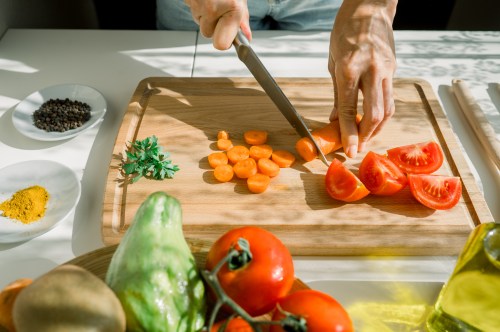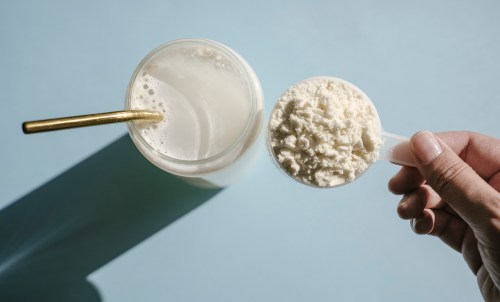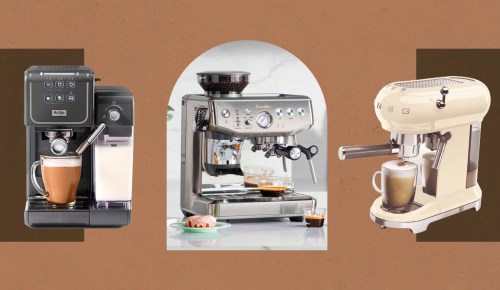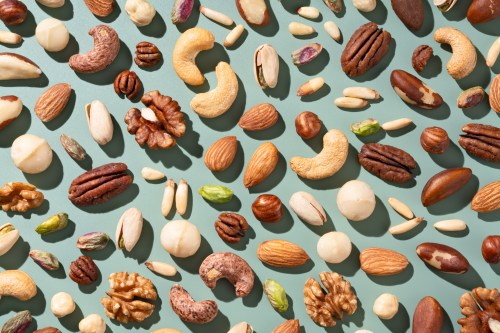Our editors independently select these products. Making a purchase through our links may earn Well+Good a commission
Anyone who’s ever walked into a coffee shop knows how important it is to be well-versed in coffee lingo in order to get what you want. Confuse a cortado with a red eye and you’ll be sorry. Words matter.
Experts in This Article
Candace Rose Rardon is a travel writer, illustrator, and the author of Stuff Every Coffee Lover Should Know.
Coffee fluency goes beyond just ordering, says Candace Rose Rardon, author of the new book Stuff Every Coffee Lover Should Know ($10). “Coffee is a world unto itself, and the more we can put into words what we’re tasting and experiencing, the deeper a connection we’ll have with it,” she says. “It’s just like learning a new language when we’re traveling.” Familiarity with the vocabulary is important for making the perfect cup of coffee at home, too.
The ability to put into words what you like (and don’t like) makes you a more educated buyer of beans, coffee equipment, and the brew itself. Fortunately, Rardon’s book includes a glossary of 23 coffee words every coffee aficionado should know.
23 words you should know if you drink coffee
Acidity: A positive feeling of crisp, fruity brightness in coffee, created by over 30 different acids. Lighter roasts tend to have greater acidity than darker roasts.
Arabica: One of two main species of the Coffea plant. It is valued for its high quality and complex flavors and accounts for 75% of global coffee production.
Blend: A mixture of coffee beans from multiple origins. The purpose of a blend is to create a consistent, well-balanced taste, as opposed to highlighting the unique terroir of a single origin.
Bloom: An important step in many manual brewing methods. It involves pouring water over the coffee grounds, which helps release carbon dioxide and kickstart the extraction.
Body: The perceived consistency and texture of coffee on the tongue, often described as light, medium, or heavy. Other descriptors include creamy, buttery, silky, juicy, and thin.
Caffeine: Natural compound and stimulant found in the coffee plant. Robusta beans have nearly twice as much caffeine as arabica varieties.
Commodity coffee: Term that describes low-grade, low-priced coffee that is traded on the New York Coffee Exchange and typically used for instant coffee and blends.
Cupping: A method for preparing and tasting multiple coffees, used by coffee professionals to score specialty coffee.
Direct trade: The practice of sourcing coffee directly from growers, instead of using importers or other intermediaries. It emphasizes long-term relationships between farmers and roasters and pays higher, more ethical prices for higher-quality coffee.
Dry aroma: The scent of dry ground coffee as it releases volatile compounds; also known as the fragrance.
Espresso: Italian for “pressed out,” this term refers to a method of preparing coffee using extreme pressure. It is also the name of a particular drink, known for its highly concentrated flavors and rich body.
Extraction: The process in which coffee’s soluble compounds dissolve in water during brewing, which give it flavor and aroma. An underextraction doesn’t dissolve enough flavor and leads to sour coffee; by contrast, overextracted coffee is excessively bitter. Two of the most common ways of extracting coffee manually are immersion, in which grounds are immersed in water through the entire extraction, and pour-over (or drip), in which water is poured over grounds and gravity draws the water down through the coffee into the vessel below.
Learn more about the benefits of coffee:
Flavor: The taste of brewed coffee, which should re always include a balance of acidity, sweetness, and bitterness.
Green coffee: Term used to describe raw coffee er beans—which are pale green—that have been processed but not yet roasted.
Peaberry: A natural mutation in which a coffee cherry produces only one bean, not two. They are it often smaller and rounder than regular coffee beans, and so should be separated and roasted on their own to ensure an even, consistent roast. Peaberries are typically sold as their own blend (e.g., Tanzanian peaberry coffee).
Processing: The step of removing coffee beans from each cherry. There are several processing methods, which happen in the producing country before green coffee is exported.
Roasting: A process that uses heat to transform raw by coffee beans—not only do they change in color from green to brown, but various chemical reactions unlock coffee’s aroma and flavors
Robusta: One of two main species of the Coffea plant. It is considered inferior to arabica because of its harsh, bitter flavor, but it is also cheaper to produce and more resistant to pests and disease.
Single origin: Term used to describe coffee grown in one geographic region. It can be as broad as several producers in the same country and as specific as a single farm, estate, or cooperative.
Specialty coffee: The Specialty Coffee Association defines specialty-grade coffee as that which receives 80+ points on a 100-point tasting scale. This term also refers to a broader mindset that views coffee as a unique product, not a mass commodity. It values sourcing quality single-origin coffee, using sustainable growing practices, and paying ethical prices to coffee farmers and growers.
Strength: The intensity of a coffee’s taste, determined by the proportion (or brew ratio) of coffee grounds to water used during brewing.
Variety: A subset or type of a larger species of the Coffea plant, either natural or human-made; it is often used interchangeably with varietal and cultivar, or a cultivated variety.
Wet aroma: The scent of brewed coffee, also known simply as the aroma.
Excerpted from Stuff Every Coffee Lover Should Know by Candace Rose Rardon. Reprinted with permission from Quirk Books.
For more healthy recipes and cooking ideas from our community, join Well+Good’s Cook With Us Facebook group.
Sign Up for Our Daily Newsletter
Get all the latest in wellness, trends, food, fitness, beauty, and more delivered right to your inbox.
Got it, you've been added to our email list.










